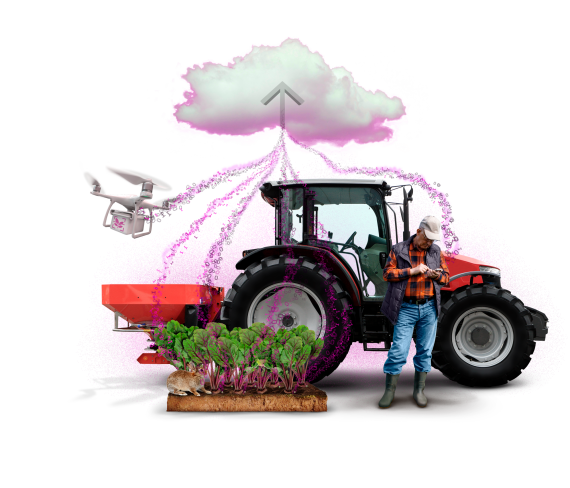text Tessa Louwerens illlustrations Pascal Tieman
The province of Gelderland decided at the end of last month to invest 65 million euros in OnePlanet, a new research centre to be housed on Wageningen Campus being launched by WUR, Radboud University, Radboud University Medical Centre, and the Belgian research centre Imec. The aim of OnePlanet is to develop technology that will improve agriculture and healthcare. The institutions will do this in four programmes focused on nano-electronics and digitalization in the areas of: Data Driven Nutrition & Health, Citizen Empowerment, Precision Production & Processing, and Tailored Supply Chain.
The arrival of OnePlanet will turn Wageningen into the Silicon Valley of the agri-food sector, said provincial newspaper De Gelderlander in January. But exactly what kind of innovation are we talking about, actually? And what can research by WUR contribute to the high-tech precision technology that OnePlanet is supposed to deliver? Three researchers talk about the innovations they are already working on within WUR, and which they hope to develop further with the OnePlanet partners and companies.
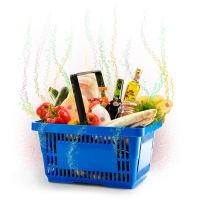
1. Personalized dietary advice
What shall we eat? In five to ten years’ time we might not answer that question ourselves anymore. Then we’ll just check the shopping list and recipe that an app on our smartphones serves up, explains Liesbeth Luijendijk, programme manager of smart customized nutrition & health and planner for OnePlanet at Wageningen Food & Biobased Research. ‘Dietary recommendations are currently one-size-fits-all, but in future they will be completely tailored to your nutritional needs, preferences and, if applicable, allergies.’
Luijendijk outlines a future in which sensors in your watch or elsewhere monitor your body and measure things like sugar and cholesterol levels in your blood via your sweat. Meanwhile, sensors in your fridge keep track of the ingredients you have in stock so that you use them up in time and don’t buy too much of a product, only to throw it out later. The ingredients for the perfect meal for you can even be ordered automatically from a local source, and all you have to do is to follow the recipe. Luijendijk: ‘Most people want to eat healthily but because of the excessive amount of information they are exposed to, they can’t see the wood for the trees. Our aim is to make the healthy option the easy option.’
Thanks to sensors and algorithms, the healthy option should become the easy option
Liesbeth Luijendijk
To create personalized dietary advice you need not just sensors but also complex algorithms which help figure out whether you had better eat less meat today or perhaps a bit more cauliflower. And this is where WUR scientists come into the picture. Because it takes scientific knowledge to design those algorithms. Not just knowledge about nutrition and its effects on the body, but also knowledge about things like food preparation methods and consumer behaviour. Luijendijk: ‘The targeted innovations sound primarily technical in the first instance, but they must also meet the needs of the consumer, so people will adopt them. In OnePlanet, we are going to develop the sensors and algorithms to make the technology affordable and accessible for the wider community. The aim is not to make new gadgets: there are plenty of those on the market. We want to develop technology that helps create a healthier and sustainable society.’
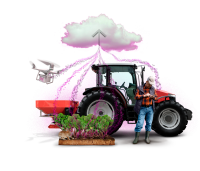
2. A sensor for every plant
Big data, sensors, self-driving tractors, drones… The technology for precision agriculture is developing at a rapid pace. ‘Where the traditional arable farmer looks at how much artificial fertilizer and pesticide is needed for optimal growth of the crop per field, in precision agriculture this is done per square metre or even per plant,’ says Jos Balendonck, a sensors and robotics researcher at Wageningen Plant Research.
Balendonck and his colleagues develop sensors for use in agriculture and horticulture. Those sensors measure things like humidity levels, temperatures or the electrical conductivity of the soil. The latter tells them something about the amount of fertilizer and the salinity. The sensors then send that information to the cloud, where it is subjected to various calculations. This produces a map which shows the farmer exactly which areas of the farm need additional chalk, perhaps, or more water or less fertilizer.
Growers will soon be sowing small biodegradable sensors on their land
Jos Balendonck
‘It is not unthinkable that this will be done for each individual plant in the future,’ says Balendonck. ‘The problem is that the sensors are still much too expensive to place one on every plant. In OnePlanet we want to develop small, affordable sensors, which might be reusable or biodegradable. That could make it possible to sow the sensors in between the plants, for example. Many growers have big acreages, so they cannot check on everything every day. Thanks to the sensors, the grower of the future will know which parts of the farm need extra attention, enabling him to manage it more efficiently.’
Like this, precision agriculture ensures optimal crop growth. And farmers do not have to use as much artificial fertilizer, pesticides and other products, which is good for the environment and for the bank balance.
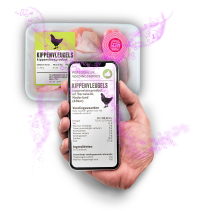
3. Food supply chains without waste
About one quarter of all the food that is produced gets lost somewhere in the food supply chain or is used for something other than human consumption. ‘To prevent such waste, production needs to match consumption requirements,’ says Toine Timmermans, sustainable food chains programme manager at Wageningen Food & Biobased Research and director of the campaign against food waste SamenTegenVoedselverspilling.
Food waste happens everywhere: during harvesting, storage and transportation, in supermarkets, restaurants and homes. By digitalizing and linking all the information about the product, the circumstances and the supply chain processes, we can organize and manage the chain to ensure that the right product is in the right place at the right time, says Timmermans. Which is quite complicated, since there are so many factors involved. ‘With avocados, for example, it’s not just a matter of storage temperature and conditions; it makes a difference which variety it is, how it was grown and harvested and how ripe it was when it was picked. By collating and integrating all that information, companies can plan better and intervene in the supply chain in good time. If you find out in time that there’s a drop in demand for fresh avocados on a particular market, you can take steps so as to be able to sell the fruit that is already on the way. You might make guacamole, for example, so they don’t get spoiled and end up being discarded. Which is what often happens now.’
If you find out in time that there’s a drop in demand for avocados, you can make guacamole
Toine Timmermans
A smart use of information also gives consumers more idea of what they are buying and whether it fits their personal needs and preferences. Timmermans: ‘Before long you will scan the smart tag on the packet of chicken curry with your smartphone, and see straightaway where the chicken filet comes from, when the chicken was slaughtered, and whether it meets your personal nutritional needs.’
There are already sensors that can detect the use-by date of the product in a packet themselves. They measure temperature, humidity, or levels of ethylene, a substance that causes fruit to ripen. Timmermans: ‘But those sensors are still too big and so expensive that they are only used for expensive products such as drugs.’ In OnePlanet, researchers and businesses are going to collaborate on designing small, affordable alternatives.
According to Timmermans, it is vital that they think about the applicability of the technology right from the start. ‘For example, the Commodities Act lays down that the use-by date must be printed on the packaging.’ Once we have sensors that can detect that date on the spot, that law may have to be changed. ‘Also, packaging should be recyclable, the sensors should be too. These are all hurdles we are going to take with OnePlanet.’
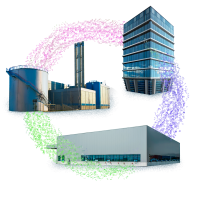
How does OnePlanet work?
OnePlanet will work on the principle of open innovation. That means more intensive collaboration between companies and science institutions in the early stages of product development, even when they are competitors. As an example, numerous different companies are involved in developing sensors that can detect a product’s shelf life, from food manufacturers to packaging manufacturers to the producers of the packaging material. Getting these companies together at an early stage enables them to share costs and thus speeds up development. At a later stage, companies can go on to develop, commercialize and possibly patent their own end products.

